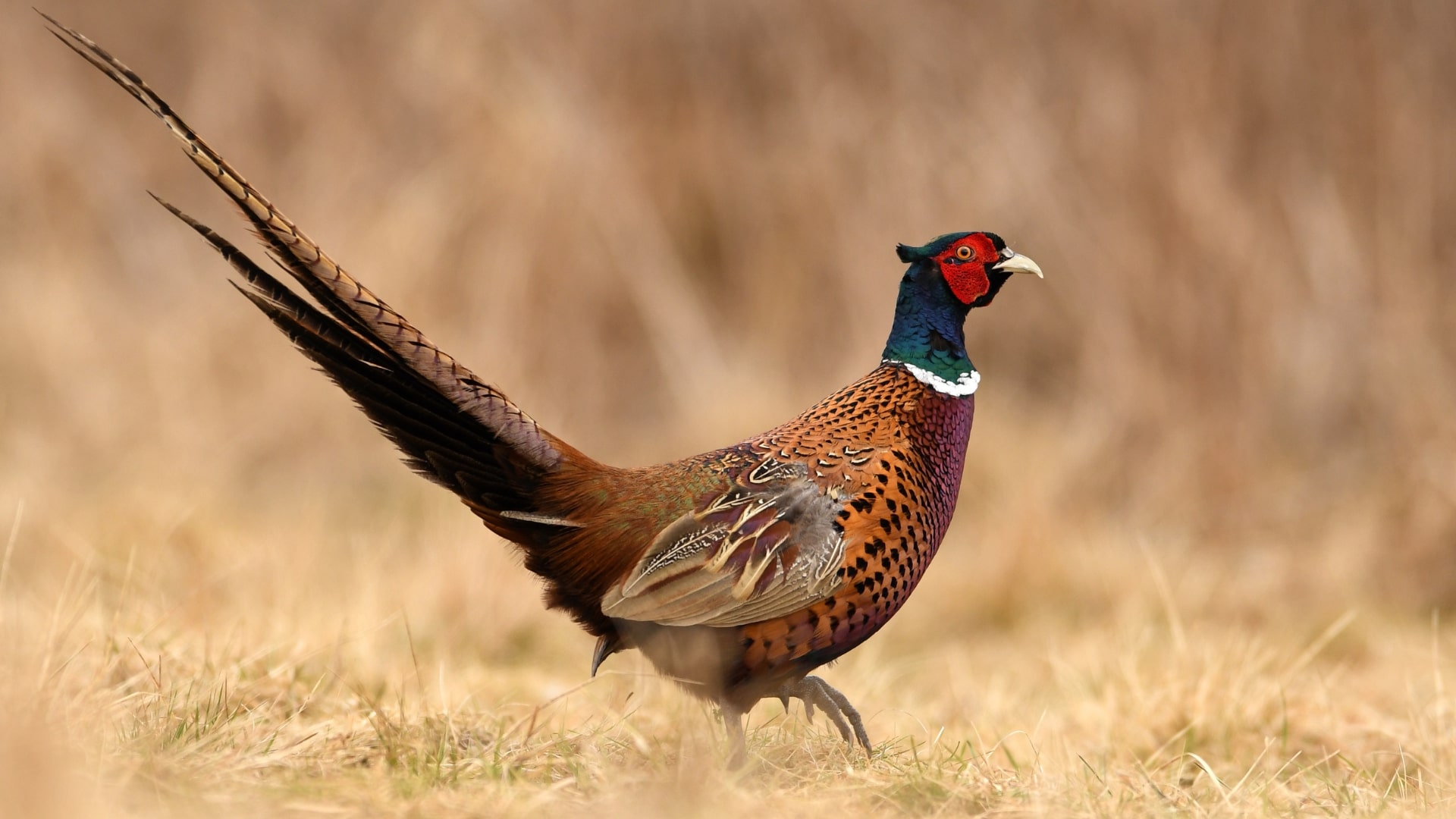Physical characteristics
Pheasants (Phasianus colchicus) are medium-sized birds, with males generally larger than females. Their colorful plumage varies depending on the species but typically includes shades of brown, green, blue, and red. The male pheasant has a long, pointed tail and a distinctive head crest, while the female has a shorter tail and more muted coloring.
Behavior
Pheasants are generally social birds that live in groups known as coveys. These groups are usually formed during the winter months when the birds gather together to share resources and provide protection from predators. Within these groups, there is usually a dominant male who will aggressively defend his territory and harem of females.
They are ground-dwelling birds and are primarily active during the day. They spend most of their time foraging for food, which includes insects, seeds, and other small invertebrates. Pheasants are also known to roost in trees at night to avoid predators.
During breeding season, male pheasants perform courtship displays to attract females. These displays can include fanning their tail feathers, strutting, and vocalizations. Once a male attracts a female, they will form a monogamous bond for the duration of the breeding season.
Pheasants are migratory birds, but not all populations migrate. Those that do migrate usually travel short distances to escape harsh winter conditions. Populations that do not migrate usually have access to food sources that are available year-round.
They are also known for their ability to fly short distances at high speeds, which is an adaptation that helps them evade predators. However, they prefer to run on the ground and will only fly when necessary.
Habitat
Pheasants are native to Asia, but they have been introduced to many parts of the world for hunting and ornamental purposes. They thrive in a variety of habitats, including grasslands, woodlands, and farmland.
Diet
Pheasants are omnivores and feed on a variety of foods, including insects, seeds, fruits, and small animals like rodents and lizards. Their diet may vary depending on the season and availability of food.
Breeding
Breeding season for pheasants typically occurs in the spring and summer months. Male pheasants perform elaborate courtship displays to attract females, including fluffing their feathers, fanning their tails, and making crowing calls. Females lay several eggs in a ground nest, and both parents take turns incubating the eggs.
Ecological role
Pheasants play an important ecological role as seed dispersers and predators of insects and small animals. They are also a popular game bird, hunted for their meat and for sport.

Pheasant Hunting
Pheasant hunting is a popular sport in many parts of the world, and pheasants are often raised in captivity for this purpose. Hunters typically use trained dogs to flush out the birds from their hiding places in the grass or brush, and then shoot them as they take off into flight. Pheasant hunting is often regulated by wildlife management agencies to ensure that populations are not over-harvested, and hunters are required to follow specific rules and regulations in order to participate in the sport.
Tracks & Signs
Pheasant tracks are distinctive and easily recognizable. They have three forward-pointing toes and one backward-pointing toe, creating a unique footprint. The tracks may measure around 2 to 2.5 inches (5 to 6.4 cm) in length and may be found in areas with soft or moist soil.
Pheasants engage in dust bathing as a way to remove parasites and keep their feathers clean. Look for areas with loose soil or dry dirt where pheasants may have created shallow depressions through dust bathing.
Conservation
Due to their popularity as a game bird, pheasant populations have been impacted by hunting pressure and habitat loss. In response, many state and federal agencies have implemented conservation measures to help protect and restore pheasant populations. These measures include habitat restoration, predator control, and the implementation of bag limits and hunting seasons.
Additionally, private landowners often participate in conservation efforts by creating and maintaining suitable habitat for pheasants on their land.
Did You Know?
Pheasants are native to Asia, particularly China and parts of Southeast Asia
However, due to their popularity as game birds, they have been introduced to various parts of the world, including North America, Europe, and New Zealand.
Male pheasants are renowned for their elaborate courtship displays
During mating season, they engage in impressive rituals that involve puffing up their plumage, fanning their tails, and making distinctive calls to attract females. These displays are a sight to behold, showcasing the male’s vitality and desirability.
They are strong flyers and can take off quickly, reaching impressive speeds in short bursts.
They are known for their explosive flight, which can make them challenging targets for hunters. Their agile flight and ability to quickly change direction are essential for evading predators in the wild.
Pheasants are known for their secretive and elusive nature.
They often prefer to hide and seek cover in tall grasses, shrubs, or dense vegetation, relying on their excellent camouflage to blend into their surroundings. This behavior allows them to avoid detection and increases their chances of survival.
Image sources: Wikimedia Commons, Ardea




